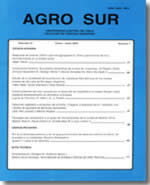Trends in livestock animals identifícation
Main Article Content
Abstract
Domestic animals identification has always been very important for breeders. Before genetic markers were developed, individual characterization and parentage verification could only be performed through phenotypic characteristics, such as the outline. This is a subjective method that does not produce much information. So a more objective technique needed to be developed. Blood groups were the first genetic markers applied to the individual characterization. Then, biochemical polymorphisms and MHC polymorphisms were incorporated.
In the '80s, DNA analysis tecniques were developed. One of them was DNA fingerprinting, which analyses the variation in the number of repeats in the minisatellite sequences.
Nowadays, the more feasible DNA technique is the microsatellites typification by PCR. However, blood groups and biochemical polymorphisms are still the standard techniques used in the paternity tests and could be complemented by molecular markers. The next steps will be to design and to standardize these markers and studies at population level to measure their information value and finally to automatize the parentage verification.

